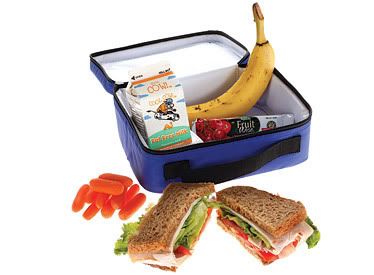
By STEPHANIE NANO, Associated Press Writer
Mon Apr 7, 6:03 PM ET
Five Philadelphia elementary schools replaced sodas with fruit juice. They scaled back snacks and banished candy. They handed out raffle tickets for wise food choices. They spent hours teaching kids, their parents and teachers about good nutrition.
What have they got to show for it?
The number of kids who got fat during the two-year experiment was half the number of kids who got fat in schools that didn’t make those efforts.
"It’s a really dramatic effect from a public health point of view. That’s the good news," said Gary Foster, director of the Center for Obesity Research and Education at Temple University. He is also the lead author of the Philadelphia schools study being published Monday in the April issue of Pediatrics.
The bad news: There were still plenty of new overweight kids in the five schools — over 7 percent of them became overweight compared to the 15 percent in the schools that didn’t make changes.
"That signals to me that we have lots more work to do," said Foster.
Schools are ideal settings for programs that target childhood obesity, the researchers noted. Children spend long hours each day at schools and eat lunch and often breakfast at school. But school-based programs have had mixed results.
The Philadelphia study put to the test a program developed by the Food Trust, a local nonprofit which works to improve access to affordable, healthy food. Ten schools enrolled in the government-funded study in 2002, and half made the changes.
Since then, many of the modifications have been carried out at most of Philadelphia’s schools, according to Joan Nachmani, the district’s director of nutrition education and one of the researchers. She said such studies help people "wake up and realize it can be done on a larger scale."
The 1,349 students in the study were in grades four to six. At the start, about 40 percent were overweight or obese. Many received free or subsidized meals.
For the study, changes were made to the food in vending machines or the cafeteria in five of the schools. Juice, water and low-fat milk replaced sodas. Snacks had to meet limits for fat, salt and sugar. Students who ate healthy snacks got raffle tickets to win prizes such as bikes and jump ropes.
"We found when you give children healthy choices, they pick them," said Grace McGinley, school nurse at Francis Hopkinson School, one of the test schools.
Staff and students had lessons on good nutrition. The message was reinforced in other subjects: food labels were used to help teach fractions. And parents were also enlisted: a fundraiser successfully substituted fruit salad for baked goods, said another of the researchers, Sandy Sherman, the Food Trust’s director of nutrition education.
She said the children were also urged to exercise at activity stations during recess. They were measured and weighed periodically and surveyed about food and exercise.
After two years, besides fewer new overweight children, the overall number of overweight students at the five schools dropped about 10 percent to 15 percent. At the no-change schools, the number of overweight children rose a quarter to 20 percent.
There was no difference between school groups in new obese students (6 percent) or the overall number of obese (about 25 percent). Obese children probably benefit more from individually targeted efforts, Foster said.
Mike Prelip of the UCLA School of Public Health said the study design was rigorous and the results interesting.
"One intervention usually won’t work for everyone," he said. "That’s why it’s good to have multiple approaches."
The researchers said their findings suggest such programs should start earlier, include gym classes and food sources outside school. Temple University and the Food Trust are now working with corner stores to get them to offer more cutup fruits and vegetables, water, and single-serving snacks. Sherman said they found that local students spend about $2 a day buying snacks that average 600 calories.
Last week, a group of fourth-graders at Fairhill School graded their corner stores during a nutrition class. Crystal Hernandez, 10, said her local store got the top green score while 9-year-old Gabrielle Hudnell’s store got a cautionary yellow.
"My mom buys healthy foods now," said Gabrielle. "We have three packs of strawberries, grapes and bananas."
Their favorite snack? Well, potato chips. "I get the little bag," Crystal was quick to add.

2 comments:
what will be next. nice blog chk me out sometimes and if ulike what u read, please do blog roll me and i will be back
will do
Post a Comment